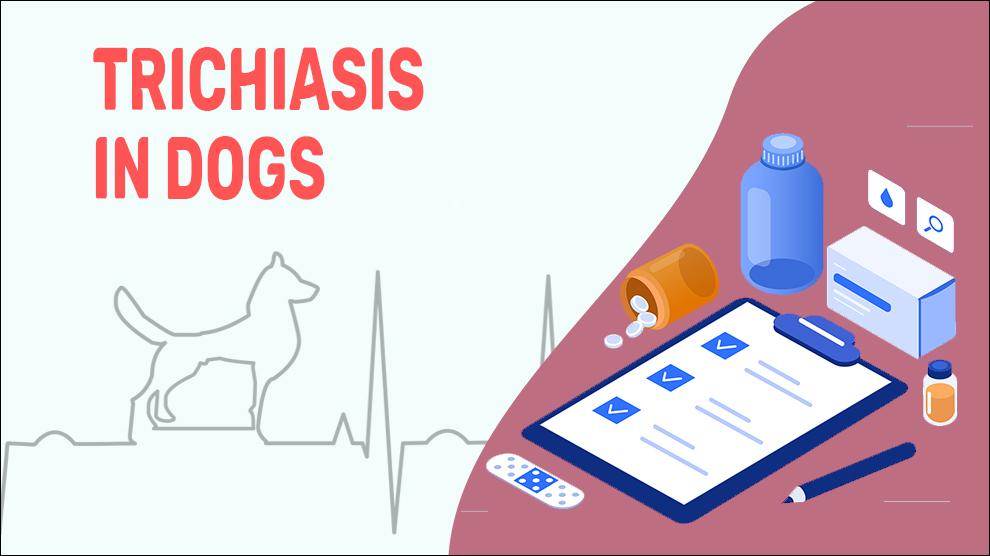What Is Trichiasis In Dogs?
Trichiasis is defined as the misdirection of eyelashes toward the eyeball or cornea and it is a very common lid abnormality. The in-growth of the eyelashes may be in a small segmental distribution or dispersed across the entire lid. Scarring of the eyelash follicles and inflammatory damage are the main reasons. When the eyelid lamellae are also involved in inflammation, this results in coexistent entropion.
Trichiasis may result from congenital, cicatricial, involutional and acute spastic causes. Brachycephalic breeds with palpebral fissures and disproportionate eyelids in length and size are usually affected by Trichiasis. The lower eyelid laxity in a few large breeds of dogs may vary with the age and health of the animal. The presence of medial canthal hairs and nasal fold trichiasis usually causes medial pigmentary keratitis in brachycephalic breeds.
Entropion (rolling in of the eyelids) can cause Trichiasis and Trichiasis also occur without entropion. cicatricial entropion is caused by the same factors that cause Trichiasis but is often idiopathic. Entropion causes ocular surface discomfort and irritation; this may result in scarring of the conjunctiva or corneal damage and inflammation.
These signs of this condition can mimic other eye conditions or general eye irritation and makes it hard to differentiate the cause of your dog’s discomfort.
Symptoms Of Trichiasis In Dogs
- Eyelashes growing around the globe
- Quitting, holding the eye shut
- Excessive tears (epiphora)
- Burning or pain in one or both eyes.
- Red, irritated eyes/ mucoid discharge along the eyelids
- Blepharospasm (closing his eyelids tightly involuntarily)
- Keratitis (corneal inflammation)
- Corneal abrasion
- Light sensitivity
Treatment Options For Trichiasis In Dogs
The trichiasis treatment objective is two-fold: To prevent further corneal exposure and to improve eyelid function.
Treatment can be divided into two modalities - medical and surgical.
Medical treatment:
- Anti-inflammatory medications: Cyclosporine, mycophenolate mofetil, leflunomide, or Azathioprine.
- Antibiotics such as chloramphenicol, gentamicin, amoxicillin, ciprofloxacin, tobramycin, oxytetracycline, etc.
- Eye pain and spasm - Atropine drops (12-48 hrs)
Surgical procedure: Ophthalmologists use different surgeries to correct Trichiasis - CO2 laser ablation, Hotz-Celsus, resection, excision, and cryosurgery.
Thermoablation: CO2 laser ablation is used to ablate symptomatic trichiasis lashes.
Hotz-Celsus: The surgical excision of an elliptically-shaped section of lower or upper eyelid skin.
Cryosurgery: Standard retinal probe with nitrous oxide will be used to destroy the follicles.
Excision: This will displace the hair and possibly the follicles as well.
Resection: To pull the lash line away from the dog’s cornea, resection can be used to take out a large part of the eyelid.
Home Remedies For Trichiasis In Dogs
- Help your dog have healthy eyes with supplements.
- Use lactated Ringer’s solution or a commercial eye cleansing agent (Eye Scrub) or physiological.
- Cooled chamomile tea can be applied with a washcloth to clean the affected eye.
- Use warm compresses for 10 to 20 minutes; apply them 2 to 3 times daily.
How To Prevent Trichiasis In Dogs?
Trichiasis caused by hereditary aberrations can be prevented by weeding out the affected dogs so that the next generation is risk-free of Trichiasis.
Affected Dog Breeds Of Trichiasis
Akita, American Staffordshire Terrier, Basset Hound, Bulldog, Bloodhound, Dalmatian, English Springer Spaniel, American Cocker Spaniel, Golden Retriever, Great Dane, Irish Setter, Labrador Retriever, Mastiff, Newfoundland, Old English Sheepdog, Pekingese, Pomeranian, Pug, Saint Bernard, Shar Pei, Shih Tzu, Staffordshire Bull Terrier, Weimaraner, Yorkshire Terrier
Causes And Prognosis For Trichiasis In Dogs
1. Causes:
Congenital Trichiasis:
Many breeds of dogs are genetically predisposed.
Acquired Trichiasis
- Eyelid trauma/ Birth trauma
- Facial nerve paralysis
- Scarring of the eyelid after surgery
- Viral and bacterial infections
- Attenuation or disinsertion of eyelid retractors
- Overriding by the preseptal orbicularis oculi muscle
- horizontal eyelid laxity
2. Mortality:
There is no mortality due to this condition documented yet.
3. Diagnosis:
- Biomicroscope
- Inner eye gonioscopy
- Tonometry, slit lamp, and fundoscopy
- Conjunctival cytology or biopsy
- Corneal stain testing
- Intraocular pressure testing
4. Prognosis:
Trichiasis isn't a deadly condition, but it can eventually lead to eye problems. Check with your vet to figure out the underlying cause and its respective treatment
Depending on the cause, Trichiasis can be treated with either surgery to remove eyelashes or medications to keep the eyes moisturized.
When To See A Vet For Trichiasis In Dogs?
Contact your vet right away, if you notice any of the following:
- Eyelashes growing around the globe
- Quitting, holding the eye shut
- Excessive tears (epiphora)
- Burning or pain in one or both eyes
Food Suggestions For Trichiasis In Dogs
The diet should be included foods containing Eye vitamins such as A, E, and C, Vitamins B6, B9, and B12. Omega 3s, Niacin, Lutein, zinc, Zeaxanthin, and carotenoids.
- Vitamins: Broccoli, Brussel sprouts, spinach, kale, papaya, strawberries, and pineapple
- Niacin: Red meat: Beef, beef liver, chicken breast, pork
- Vitamin B-12: Organ meat, Grass-Fed Meat, beef liver
- Omega-3 oily fishes such as Salmon, anchovies, tuna, Sardines, and Mackerel
- Lutein: Kale, spinach, Parsley, etc
- Fresh vegetables/fruit (carrots, green beans, banana, orange, apple, Blackberries, Raspberries, Blueberries, etc)
- Protein, such as lean beef, chicken, fish, turkey
- Zinc foods such as crab, lobster, Pork, beans, tuna, Oysters
Conclusion
The cause of the Trichiasis determines the prognosis.
Trichiasis caused by trauma has a guarded prognosis and is not at risk of developing complications in the future.
Hereditary abnormality caused by Trichiasis can be surgically corrected, and the prognosis is good.

















